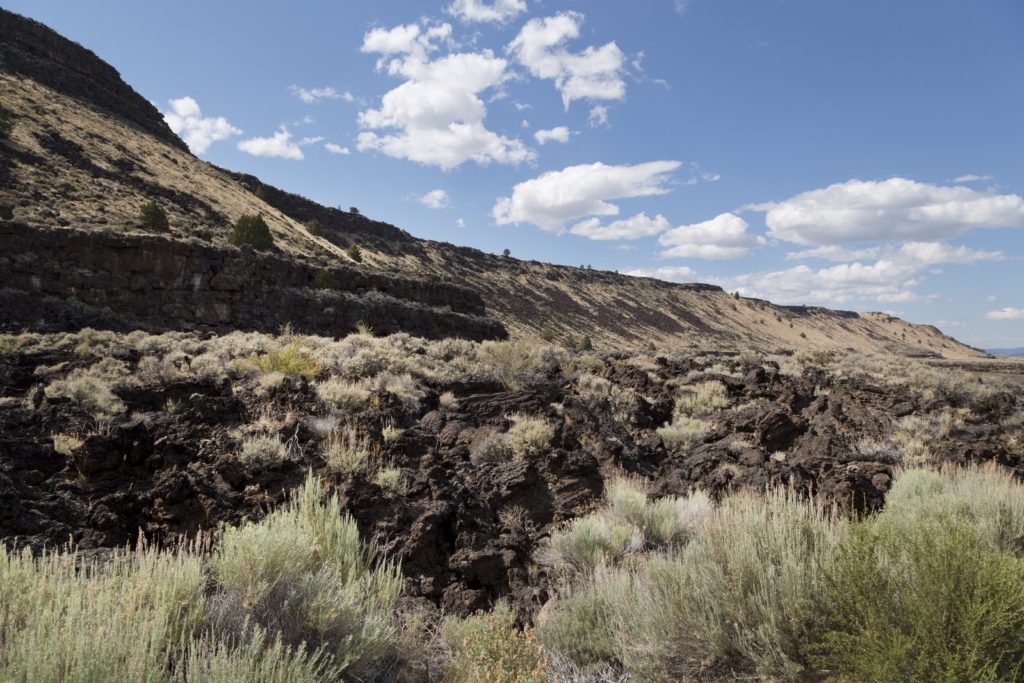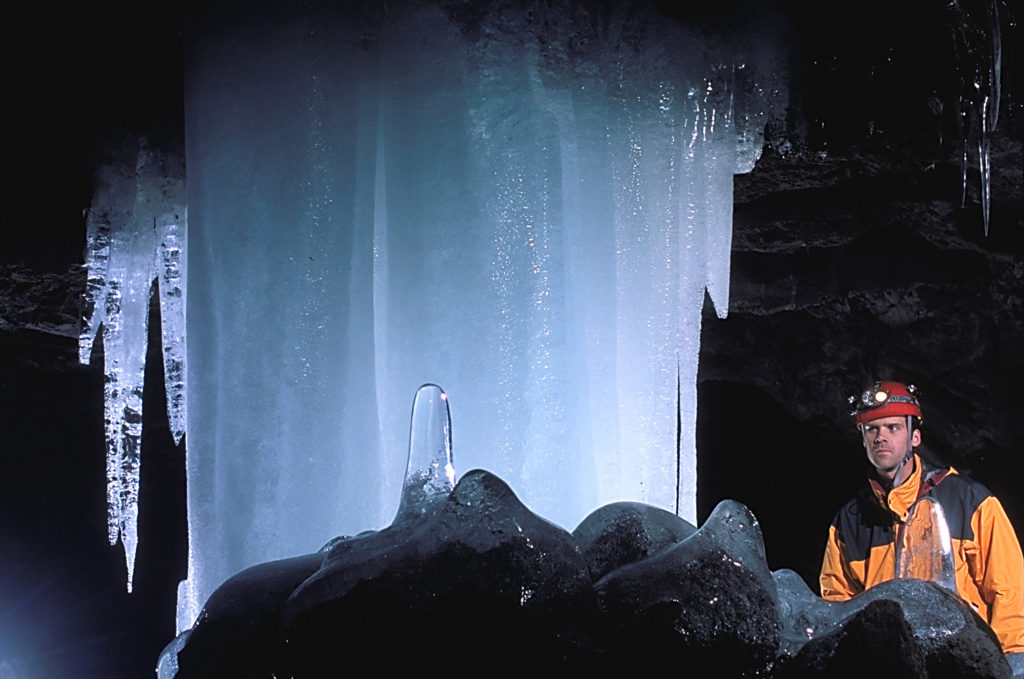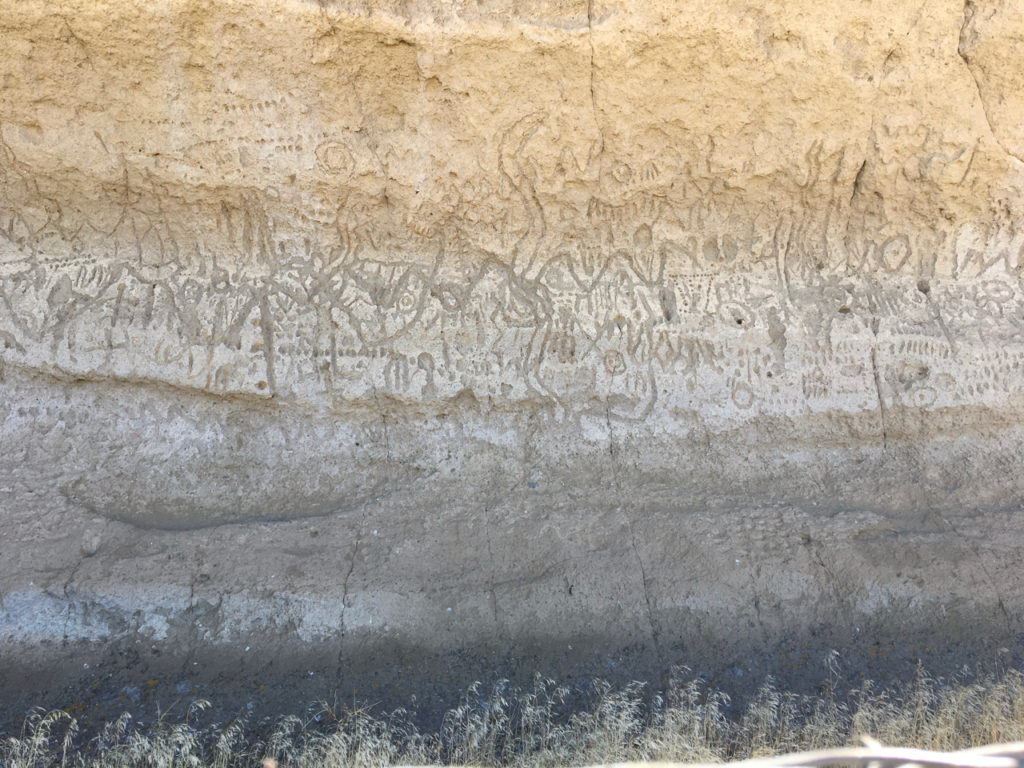President Calvin Coolidge was known as a man of few words (his nickname was Silent Cal), and he characteristically used few words to proclaim a new national monument on November 21, 1925. The lands, he said, “contain objects of such historic and scientific interest as to justify their reservation and protection….” And so, Lava Beds National Monument was born.

Lava Beds is located in far northern California, just below the border with Oregon. The park covers more than 46,000 acres, and over 60% of the area is now preserved as wilderness (designated in 1972). Lava Beds is adjacent to other federally protected lands and water, including Modoc National Forest and the Tule Lake National Wildlife Refuge.
Lava Beds is a geological marvel, the landscape shaped by a history of volcanic lava flows that repeatedly covered the area in the past. As the flowing lava cooled, it formed a dozen or so long, undulating lava tubes, subterranean channels left empty as the cooling lava shrunk or drained away. Over time, the roofs over many of those tubes collapsed, breaking the tunnels into “caves” that lay just below the surface and have open access from the top. Lava Beds National Monument contains about 500 lava caves, more than any other place in the United States.

The lava caves create a formidable landscape. The surface is fractured with caves and fissures that make traveling around the area difficult and dangerous. Bats like it, however, as the variety of caves in size and extent provide a variety of niches for different species. Fifteen bat species inhabit the monument. The most common is Townsend’s big-eared bat, but the most exotic is the Brazilian long-tailed bat, a migrant that travels thousands of miles between its summer and winter homes. Bird life is also abundant and diverse because Lava Beds sits at the intersection of several different habitat types.
Native Americans lived in the area for thousands of years, making Lava Beds one of the longest continually occupied homelands in North America. Ancestors of today’s Modoc people left an astounding display of rock art, both petroglyphs (carvings into the rock) and pictographs (paintings on the rocks). More than 5,000 individual rock pictures occur, many at the entrances to lava caves. The artifacts date back more than 6,000 years.

Lava Beds was also the site of one of the most brutal battles between native peoples and the United States during 1872-1873. The Modoc War, as the confrontations are now called, occurred because the US government forced Modoc people out of their traditional homelands in the Lava Bed area, moving them to the nearby Klamath reservation. When Modoc families continued to return to their homes in defiance of the government, the US Cavalry finally resorted to violence to enforce their orders. The resulting series of battles left many Native Americans and US soldiers dead or wounded. The landscape prolonged the warfare, providing ample routes and locations for Modoc warriors to use to escape or ambush soldiers. Eventually, all Modoc people were relocated to a reservation in Oklahoma.
Despite its location and interesting cultural, geological and biological resources, Lava Beds is not heavily visited. During 2018, about 128,000 people enjoyed the park, a number that hasn’t changed much in this century.
References:
National Park Service. A Brief History of the Modoc War, Lava Beds National Monument. Available at: https://www.nps.gov/labe/planyourvisit/upload/MODOC%20WAR.pdf. Accessed November 14, 2019.
OhRanger.com. Lava Beds National Monument, History. Available at: http://www.ohranger.com/lava-beds/history. Accessed November 14, 2019.
US Geological Survey. Lava tubes at Lava Beds National Monument. Available at: https://www.usgs.gov/volcanoes/medicine-lake/lava-tubes-lava-beds-national-monument. Accessed November 14, 2019.
